Adaptation to the Russian Students (Bachelor, Trade)
Adaptation to the Russian Students (Bachelor of Science in International Trade, e-learning, fourth semester, second year)
| Bachelor of Science in International Trade |

Syllabus of the Subject: Russian Economy and International Trade
- Introduction to the Russian economy
- Russian Energy Sector
- Russian Natural Resources
- Russian Agriculture Sector
- Russian International Trade
- Russia and the BRICS Countries
- Russian Customs
Syllabus of the Subject: Russia's Free Trade Agreement
- APEC
- Shanghai Cooperation Organization (SCO)
- Eurasian Economic Union
- Commonwealth of Independent States (CIS). Moldova has a Trade Agreement with the CIS
- Black Sea Economic Cooperation (BSEC)
- EU-Russia
- ASEAN-Russia Business Forum
- Free trade agreement between Russia, Belarus, and Kazakhstan
- Russia has Trade Agreements with Armenia, Azerbaijan, Belarus, Georgia, Kyrgyzstan, Moldova, Serbia, New Zealand, and Cameroon
- BRICS Countries
- Africa-BRICS Cooperation (Russia is a member of the BRICS)
- Russia has a Customs Union with Vietnam
- Andean Community-Russia
- Council of the Baltic Sea States
- Organization for Security and Cooperation in Europe
Russia is a member of the next regional economic Institutions:
- ESCAP
- Asia Cooperation Dialogue
- Asia-Europe Meeting
- European Investment Bank
- UNECE
Syllabus of the Subject: Asia-Pacific Economic Cooperation (APEC)
- Introduction to the APEC
- Structure of the APEC
- Bogor Goals. The Osaka Action Agenda
- Regional Trade and Investment Liberalization in the APEC Markets
- APEC Business Facilitation
- Achievements and Benefits of the APEC
- Free-Trade Area of the Asia-Pacific
APEC Committee on Trade and Investment.
- Introduction to the APEC Committee on Trade and Investment
- Principles for Cross-Border Trade in Services and International Trade facilitation
- Business Mobility Group
- Group on Services
- Intellectual Property Rights
- Market Access
- Customs Procedures
Objectives:
- To understand the Bogor Goals and functions of the APEC
- To assess the benefits for the member countries as well the areas of cooperation
- To know the role of the APEC Commission on Trade and Investment
- To analyze the economic integration process and trade among the member economies of the Asia-Pacific Economic Cooperation
- To understand the trade liberalization, trade facilitation and investment flows between the APEC Markets
Pacific Economic Cooperation Council (PEEC)
- Introduction to the Pacific Economic Cooperation Council
- PECC Task Forces
- Trade and Investment in Services
- Index of the economic integration in the Asia-Pacific
- PEEC and the Free-Trade Area of the Asia-Pacific
Syllabus of the Subject: Shanghai Cooperation Organization (SCO).
- Introduction to the Shanghai Cooperation Organization (SCO)
- Objectives of the SCO. Shanghai Five Mechanism
- Economy and International Trade Relations between the SCO Member: Kazakhstan, China, the Kyrgyz Republic, Russia, Tajikistan, and Uzbekistan
- SCO Business Council of the Shanghai Cooperation Organization
- Interbank Consortium of the Shanghai Cooperation Organization
Objectives:
- To understand the purposes, functions, and affiliated bodies of the SCO
- To analyze the areas of cooperation among the member economies of the Shanghai Cooperation Organization
Syllabus of the Subject: Eurasian Economic Community (EurAsEC)
- Introduction to the Eurasian Economic Community (EurAsEC)
- Economic Profile of the Eurasian region: Belarus, Kazakhstan, Kyrgyzstan, Russia, and Tajikistan
- EurAsEC Customs Union of the Eurasian Economic Community
- EurAsEC Common Economic Space
- Eurasian Business Council
Objectives:
- To understand the purposes and the areas of cooperation of the Eurasian Economic Community (EurAsEC)
- To know the EURASEC Customs Union
- To understand the concept of “EurAsEC's Common Economic Space”
Syllabus of the Subject: Eurasian Economic Union (EAEU)
- Introduction to the Eurasian Economic Union (EAEU): Armenia, Belarus, Kazakhstan, the Kyrgyz Republic, and Russia
- Eurasian Economic Commission
- Economic Profile of the Eurasian region
- Free movement of products
- Customs Union between Belarus, Kazakhstan, and Russia
- EEU Common Customs Tariff
- Silk Road Economic Belt
- Commonwealth of Independent States (CIS)-Eurasian Economic Union FTA
- Vietnam-Eurasian Economic Union Free Trade Zone
Objectives:
- To understand the purposes and the areas of cooperation of the Eurasian Economic Union (EAEU)
- To know the economic profile of the Eurasian markets
- To assess the benefits for the member countries and the areas of cooperation
- To know the Eurasian Economic Union's Trade Agreements
Syllabus of the Subject: Commonwealth of Independent States (CIS).
- Introduction to the Commonwealth of Independent States (CIS): Armenia, Azerbaijan, Kazakhstan, Kyrgyzstan, Moldova, Tajikistan, Turkmenistan, anUzbekistan
- Economic Profile of the CIS countries
- CIS Economic and Customs Union of the Commonwealth of Independent States
- Commonwealth of Independent States Free-Trade Area
- Eurasian Economic Union-Commonwealth of Independent States FTA
Objectives:
- To understand the purposes and functions of the CIS
- To know the economic profile of the CIS member countries
- To evaluate the benefits for the member countries
- To understand the CIS economic and customs union and the free-trade area
Syllabus of the Subject: Africa-BRICS Cooperation
- Introduction to the Africa-BRICS Cooperation
- Major trends in Africa-BRICS Cooperation
- International Trade Africa-BRICS (Brazil, Russia, India, China, and South Africa)
- Foreign Investment between Africa and the BRICS Countries
Objectives:
- To understand the purposes and functions of Africa-BRICS Cooperation
- To analyze the international trade and FDI flows between Africa and the BRICS Countries
- To assess the trends in Africa-BRICS Cooperation
Syllabus of the Subject: Black Sea Economic Cooperation (BSEC).
- Introduction to the Organization of the Black Sea Economic Cooperation
- Areas of cooperation of the BSEC: Customs, International Trade and Transport
- Black Sea Trade and Development Bank
Objectives:
- To understand the purposes and functions of the BSEC
- To analyze the areas of cooperation
- To evaluate the role of the Black Sea Trade and Development Bank
Syllabus of the Subject: European Union-Russia Trade Agreement.
- Introduction to trade relations between the EU and Russia
- New Russia-EU Trade Agreement
Syllabus of the Subject: ASEAN-Russia Business Forum
- Introduction to the ASEAN-Russia Business Forum
- International Trade Russia-ASEAN Countries
Syllabus of the Subject: Council of the Baltic Sea States (CBSS).
- Introduction to the Council of the Baltic Sea States
- Vision for the Baltic Sea Region by 2020 (Vilnius Declaration)
- Economic Development of the Baltic Sea Countries
- Economic report on the state of the Baltic region
Syllabus of the Subject: Organization for Security and Cooperation in Europe (OSCE).
- Introduction to the Organization for Security and Cooperation in Europe
- The main activities of the OSCE
Syllabus of the Subject: Andean Community-Russia
- Trade in goods and services between the Andean Community and Russia
- Investment flows Russia-Andean Community
Syllabus of the Subject: Economic and Social Commission for Asia and the Pacific (ESACP).
- Introduction to the Economic and Social Commission for Asia and the Pacific (UniteNations)
- ESCAP Objectives and Programs: regional integration, Asian development
- Committee on International Trade and Investment
- Economic Growth in Asia and the Pacific
- Regionalism in Asia. Trade Agreements in Asia
- Trade Facilitation in the Asia-Pacific region
- Statistical Yearbook for Asia and the Pacific
Objectives:
- To understand the goals of the ESCAP
- To analyze the role of the Committee on International Trade and Investment
- To know the importance of the Asian trade agreements and the Asian International Trade indicators
- To understand the trade facilitation programs in the Asia-Pacific region
Syllabus of the Subject: European Investment Bank (EIB).
- Introduction to the European Investment Bank
- European Investment Fund
- European Investment Bank strategy
Objectives:
- To understand the purposes and the areas of cooperation of the European Investment Bank
- To analyze the EIB
- To know the European Investment Fund
Samples of the adaptation to the Russian Students (Bachelor of Science in International Trade, e-learning, fourth semester, second year):
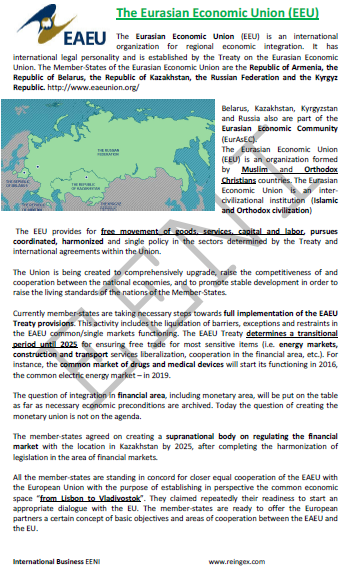
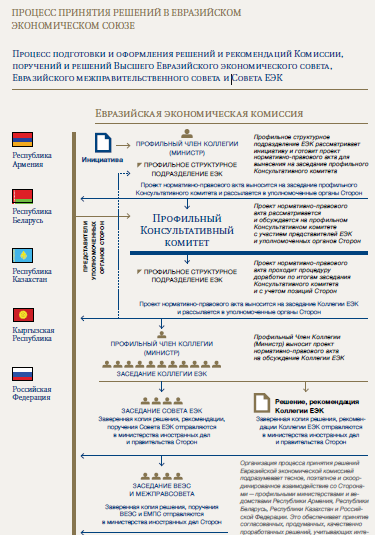
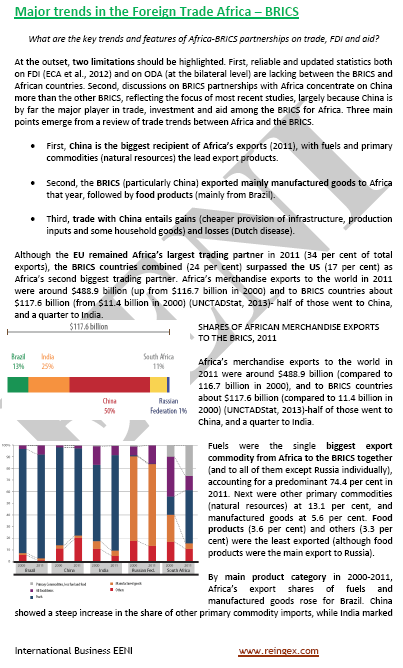


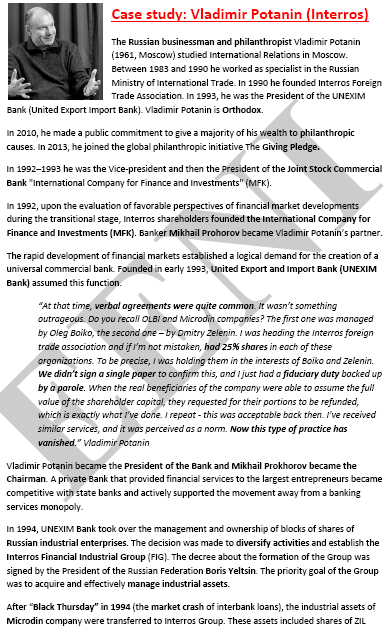
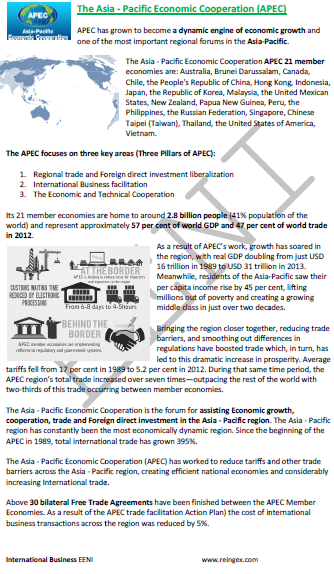

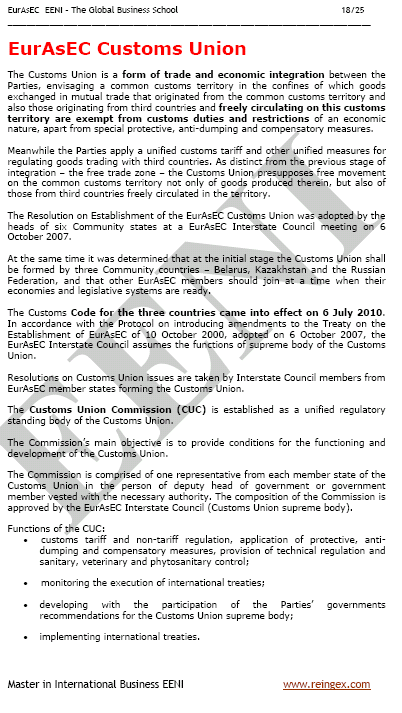
Languages:  or or
or or  EENI
EENI  EENI
EENI  EENI.
EENI.
(c) EENI Global Business School (1995-2024)
We do not use cookies
Top of this page

